Blue cheese is a type of cheese that has gained immense popularity as a salad ingredient. Known for its distinct blue veins and tangy flavor, this cheese has become a staple in many households and restaurants. In this article, we will explore the origins of blue cheese, its different types, health benefits, and tips for using it in salads to enhance their flavor. We will also provide some creative salad recipes featuring blue cheese as the star ingredient and ways to make a homemade blue cheese dressing. So, let’s dive into the world of blue cheese and discover why it has become a favorite among salad lovers.
Different Typers of Blue Cheese Commonly Used In Salads
There are many types of blue cheese available in the market, each with its unique characteristics and flavors. Some of the most commonly used blue cheeses in salads include Roquefort, Gorgonzola, Stilton, and Danish blue. Roquefort is known for its intense flavor and crumbly texture, while Gorgonzola has a milder taste and a creamy texture. Stilton, a popular British blue cheese, has a rich and buttery flavor, and Danish blue is characterized by its sharp and salty taste.
Tips For Pairing Blue Cheese with Other Salad Ingredients
Blue cheese has a strong and distinctive flavor, which can overpower other ingredients in a salad. Therefore, it is essential to pair it with the right ingredients to balance out its flavor. Some classic combinations include pairing blue cheese with sweet fruits like apples and pears, as well as nuts like walnuts and pecans. It also goes well with bitter greens like arugula and radicchio. For a more adventurous pairing, try adding blue cheese to salads with grilled meats or roasted vegetables.
How To Make A Homemade Blue Cheese Dressing For Salads
Making a homemade blue cheese dressing is simple and requires just a few ingredients. In a bowl, mix together ¼ cup of mayonnaise, ¼ cup of sour cream, 2 tablespoons of crumbled blue cheese, 2 tablespoons of white wine vinegar, 1 teaspoon of Dijon mustard, and a pinch of salt and pepper. Adjust the quantities of each ingredient to your taste, and your delicious blue cheese dressing is ready to be drizzled over your favorite salad.
Creative and Unique Recipes Featuring Blue Cheese
Blue cheese can be used in a variety of salads, both vegetarian and non-vegetarian. For a simple yet flavorful salad, mix together arugula, sliced pears, and toasted walnuts, and top it with crumbled blue cheese and a balsamic vinaigrette dressing. For a heartier option, try a grilled chicken and avocado salad with blue cheese and a honey mustard dressing. Blue cheese can also be incorporated into pasta salads, adding a creamy and tangy element to the dish.
The Versatility of Blue Cheese in Both Vegetarian and Non-Vegetarian Salads
One of the best things about blue cheese is its versatility, as it can be used in both vegetarian and non-vegetarian salads. Vegetarians can enjoy a beet and blue cheese salad, which combines roasted beets, mixed greens, and crumbled blue cheese with a light vinaigrette dressing. Non-vegetarians can try a steak and blue cheese salad, which features grilled steak, mixed greens, cherry tomatoes, and a blue cheese dressing.

The Best Ways To Store and Preserve Blue Cheese For Use In Salads
To ensure the freshness and flavor of blue cheese, it is essential to store it properly. The best way to store blue cheese is to wrap it tightly in plastic wrap and store it in the refrigerator. It can last for up to two weeks if stored properly. To prevent the cheese from drying out, place a damp paper towel over it before wrapping it in plastic wrap. If you have a larger piece of blue cheese, you can also freeze it and use it as needed.

Why is Blue Cheese so expensive?
Blue Cheese is expensive because it is made typically in Europe. Mostly in France, Italy, Germany and England. If you live in North America, you are most likely going to pay a higher price because of the import costs.
Why Is Blue Cheese Moldy?
The Mold that you see on Blue Cheese is from the group of spores that make penicillin. Once you see the blue mold on the cheese that means it’s time to throw it away. If you are allergic to penicillin you should still be able to eat blue cheese.

Below are my favorite Salad recipes with Blue Cheese
9. Laurens Latest : California Club Blue Cheese Chopped Salad
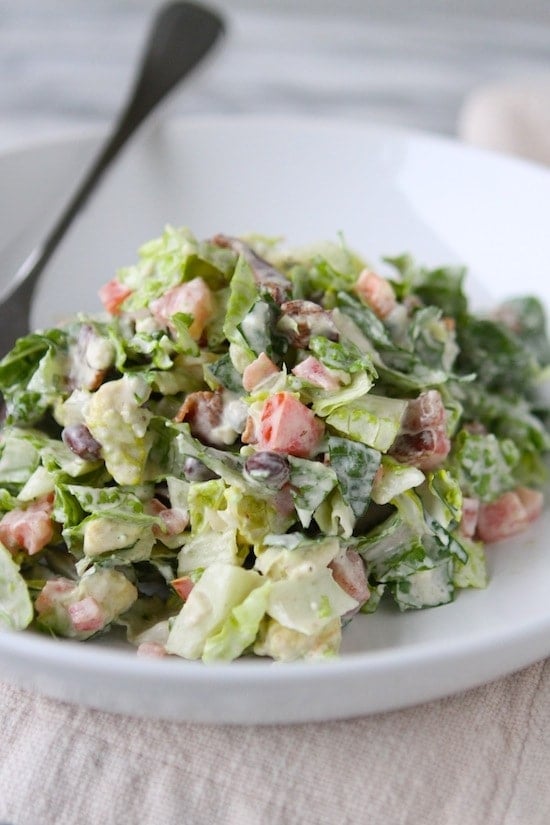
8. Neighbor Food Blog : Steak and Blue Cheese Salad
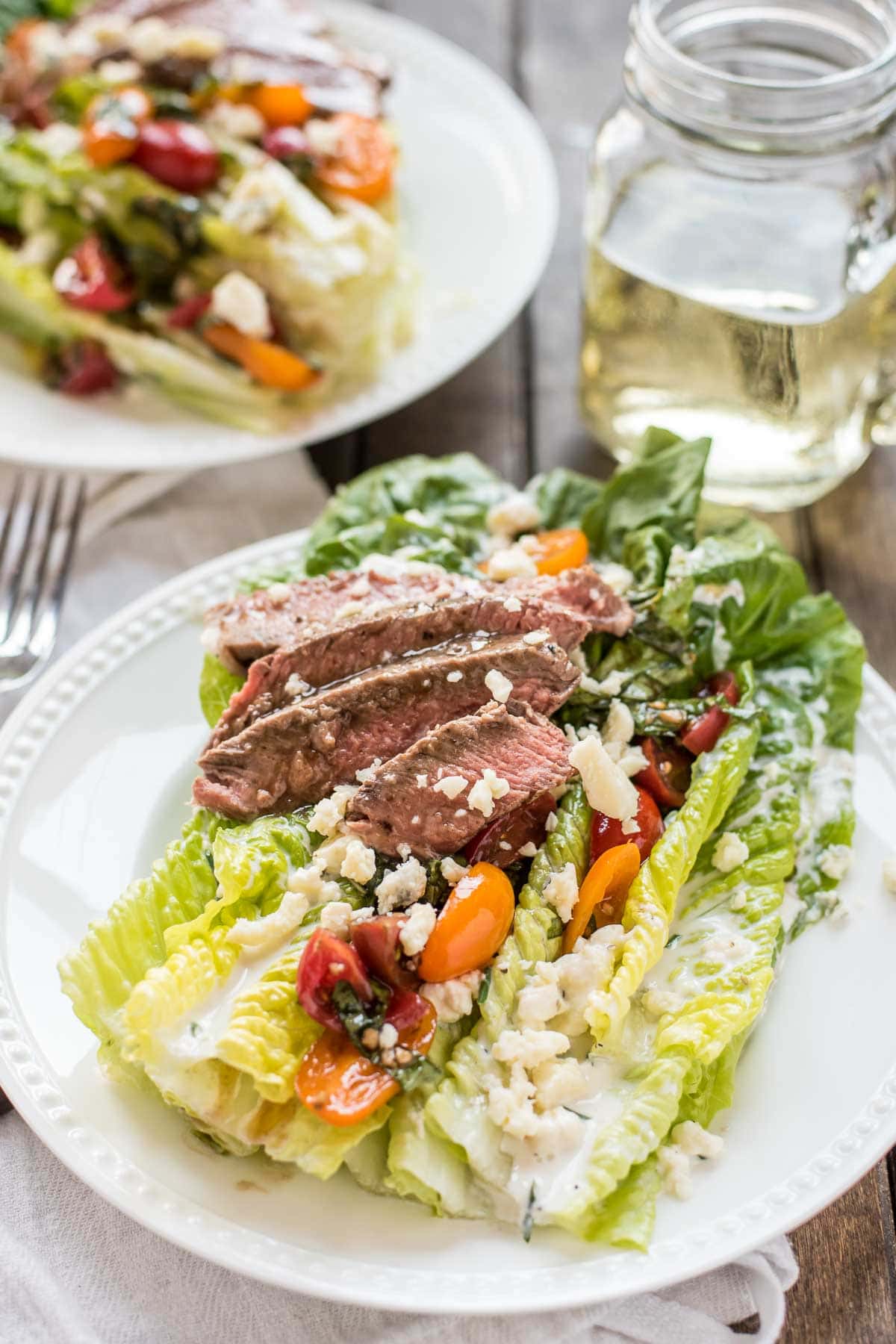
7. I Should Be Mopping The Floor : Blue Cheese Pear and Walnut Salad

6. Back To The Books Nutrition : Bacon Avocado Blue Cheese Salad
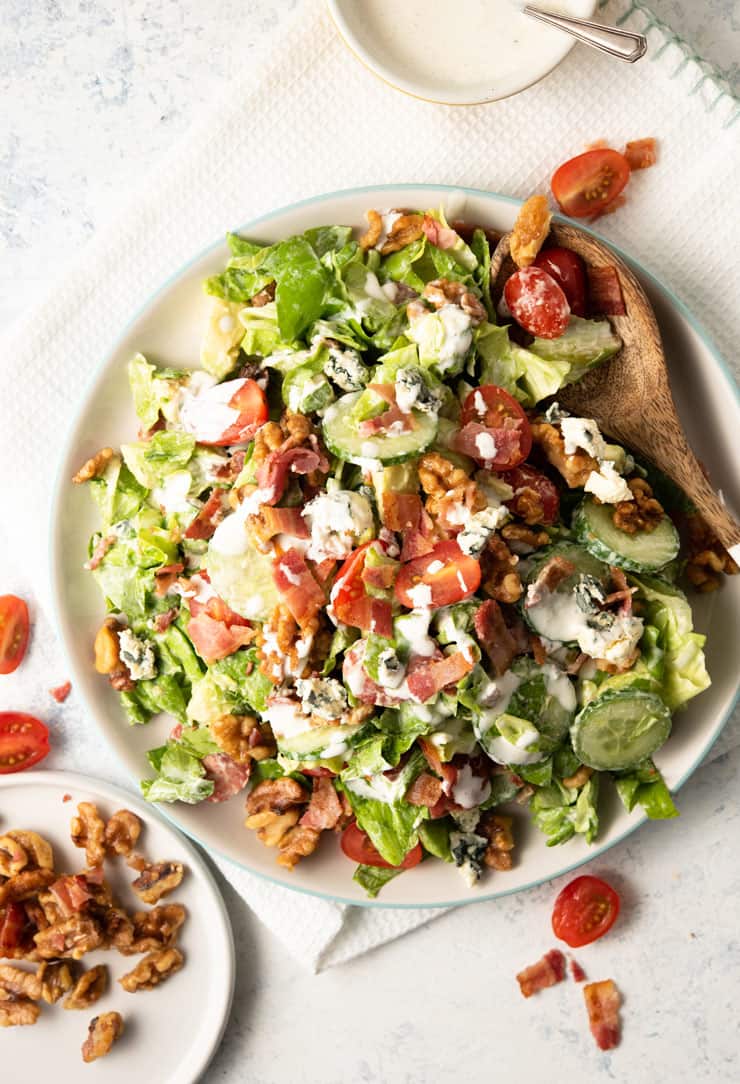
Cookie and Kate : Pear Date Walnut Salad

4 Home Chef : Blue Cheese Quinoa and Arugula Salad

3 The Cutlery Chronicles : Ultimate French Blue Cheese Salad
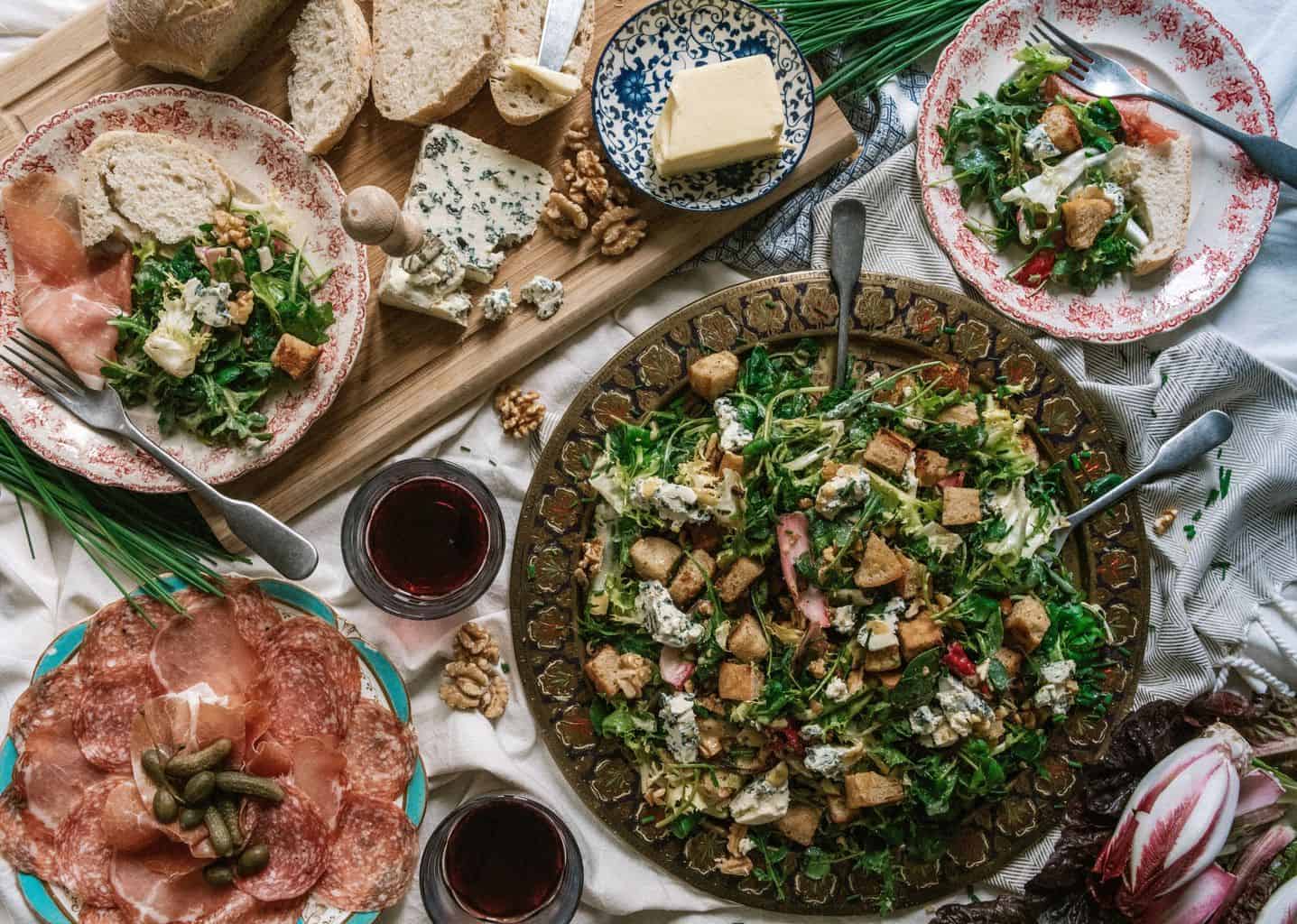
2 Love and Olive Oil : Chopped Romaine Salad with Blue Cheese
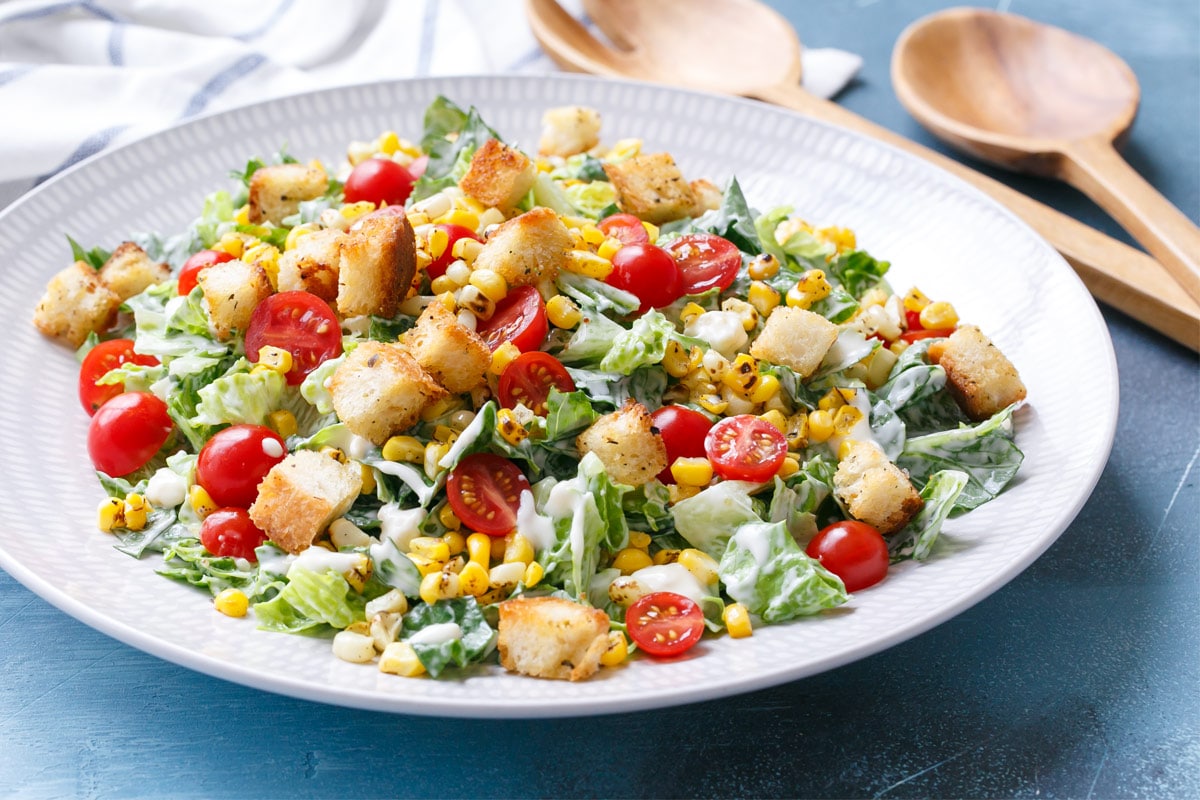
1 Lemon Tree Dwelling : Strawberry Bacon Blue Cheese
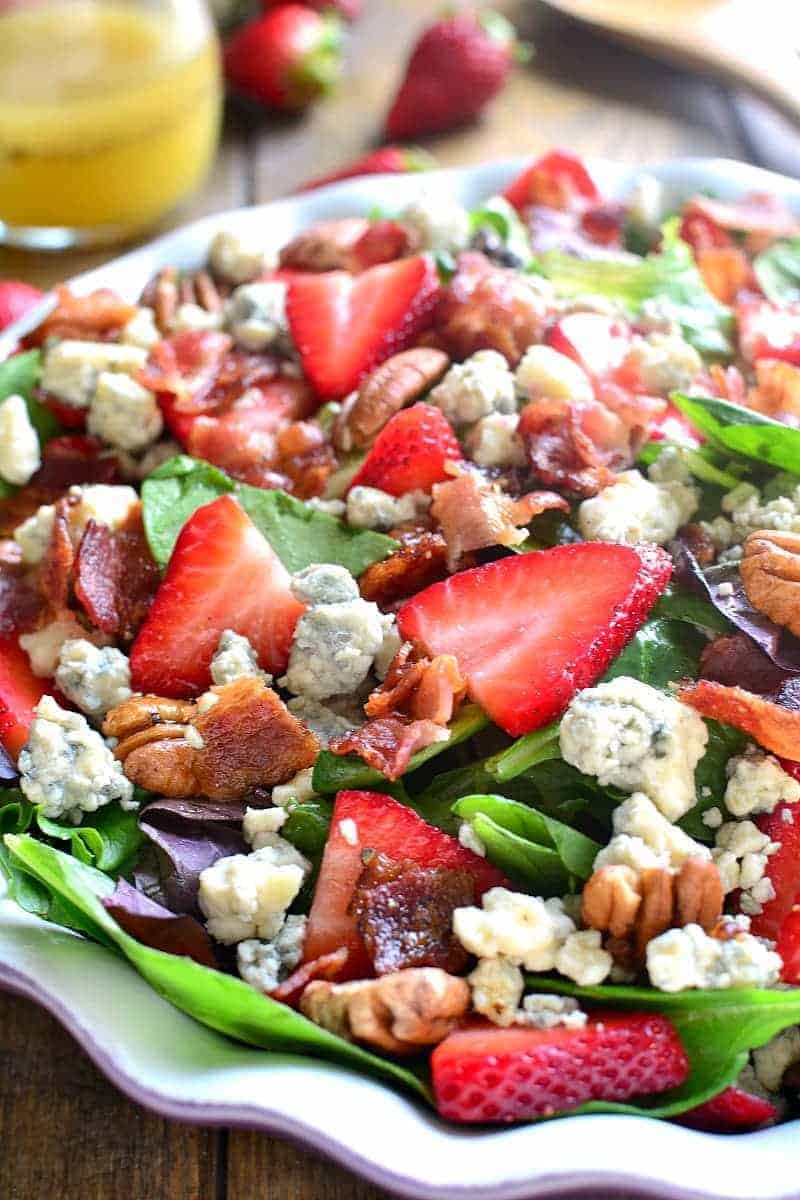
Conclusion
Blue cheese is a delicious and nutritious addition to salads. Its tangy and creamy flavor, along with its health benefits, make it a popular ingredient in many cuisines. With its versatility, it can be used in a variety of salads, and with the tips and recipes mentioned in this article, you can create flavorful and unique salads that will be a hit at any gathering. So, the next time you’re making a salad, don’t forget to add some blue cheese for that extra punch of flavor and nutrition
Other Posts You Might Like
The Very Best Salads with Over Easy Eggs
The Very Best Salads With Radishes
The 21 Best Chinese Chicken Salads Ever




